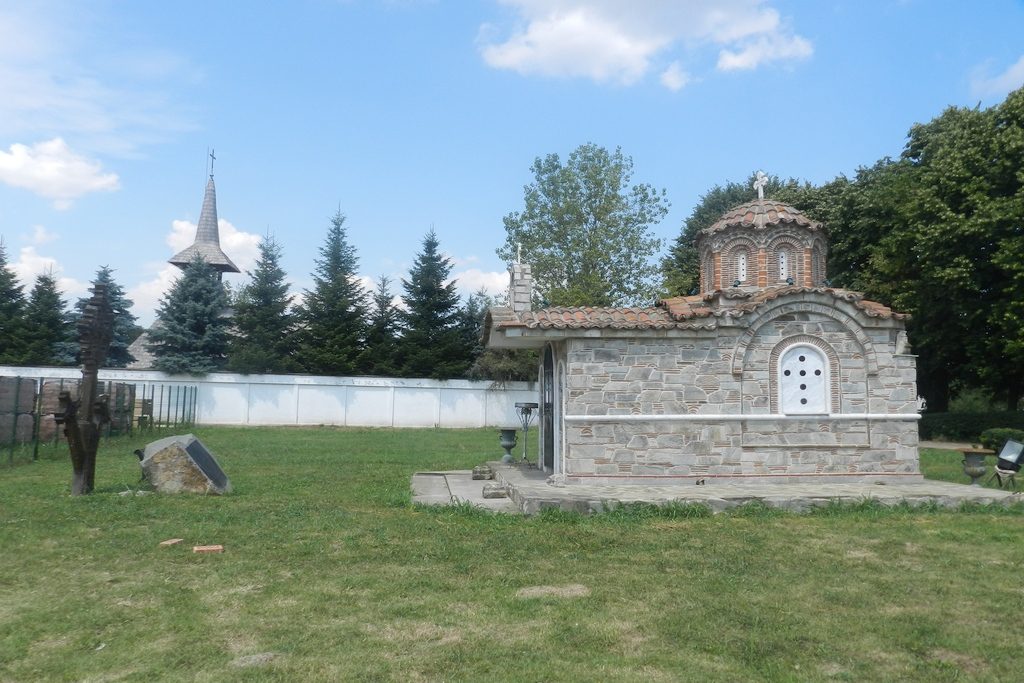

Saint George Monastery was built up in the year 2006, when, soon after the seating on the bishop chair from Giurgiu, loving of the monastic life, His Grace the Priest Dr. Ambrozie, the Bishop of Giurgiu decided to establish a monastery of nuns, the only one from the eparchy, his building up being executed with the sustained efforts of the clerics from the Episcopacy of Giurgiu.
The consecration of the monastery has been performed on the date of the 22nd of April, the year 2007, in the Sunday of the Prudes, by His Grace the Priest Ambrozie, Bishop of Giurgiu, together with His Eminence the Priest Nifon, Archbishop of Târgoviște, surrounded by a numerous synod composed by priests and deacons, as well as a large number of Christians.
Although situated outside the area of Maramureș, in the Saint George Monastery from Giurgiu, the arrangement of the church service is performed in a wooden church executed with great craftsmanship of the masters from Bârsana Țării Maramureșului.
The interior painting is executed in a Neo-Byzantine style and it portrays important events of the history of the saving of the human race, the old paintings of over 200 years portraying biblical scenes which happened over 2000 years ago, compile the iconostasis which separates the altar from the nave.
The titular saint of the monastery is the Great Forty Martyr Saint George, considered the protector of the city.
The Forty Martyr Saint George was born in Cappadocia, of Christian parents. He lived in the times of the emperor Diocletian (the IVth century). Because of his courage and his victories, he becomes the leader of the army.
In the year 303, the emperor Diocletian will start the fight against the Christians. The places of worship were destroyed, the Christian gatherings were prohibited, the holy books were burned, and the ones who refused to make sacrifices for the gods, were killed. In this situation, Saint George doesn’t keep away of confessing his faith in Christ, which is why he will be imprisoned. He will be subjected to diverse afflictions: hitting with spear, the breaking wheel, buried in whitewash, flagstones put on his chest, etc., but no torture could make him give up his faith.
The ones present to these sufferings, astonished by the fact that Saint George remained unharmed and that he resurrected a dead, gave up the pagan belief and received the faith in Christ. The miracle of resurrecting the deceased one convinced even the empress Alexandra, the wife of Diocletian, to embrace the Christianity.
Saint George was allured with honors in order to make sacrifices for the gods, but these attempts were in vain. Because he didn’t give up his faith in Christ, Saint George is sentenced to death by decapitation, on the day of the 23rd of April 304, since then, this day remained a day of celebration.
